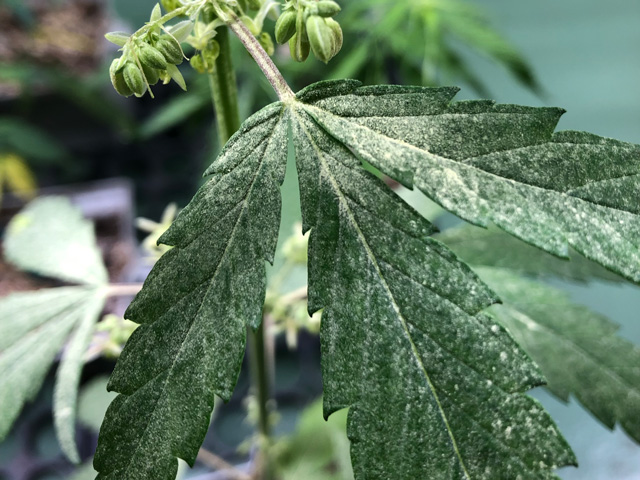How to collect a lot of cannabis pollen?

Sydney Jordan
From school science lessons, an interest in gardening, or general knowledge of beekeeping, most people have at least a rudimentary understanding of pollination. Agents like insects, animals, water or wind transfer pollen from a male part of a plant to a female part—or between separate plants—to allow for fertilization and seed production, with bees and butterflies possibly the best known pollinators.
Knowledge of pollination becomes incredibly important on cannabis farms, in Canada and elsewhere, where copious numbers of female plants are grown to produce unpollinated female flowers (or colla) for human consumption. Accidental pollination of female flowers by a rogue male plant can decrease the cannabinoid content by half, so many licensed facilities do not conduct any agricultural breeding efforts, slowing innovation in this crop.
Sydney Jordan, a PhD student in Molecular Science at Ryerson University, working with Professor Arthur Weis of the University of Toronto and Professor Lesley Campbell of Ryerson University, set out to discover how to carefully collect the most cannabis pollen in the shortest amount of time to support breeding efforts of this emerging Canadian crop and published the findings in Applications in Plant Sciences. (external link)

The difficulty in collecting cannabis pollen lies in its tendency to easily disperse with the smallest wind movement. Since most cannabis breeders are currently hand collecting pollen to cross-pollinate their plants, they cannot control where the pollen moves, making crop breeding very difficult.
“To improve upon collection of pollen by hand, we compared hand collection to collection by vacuum, water or flower bagging methods,” says Jordan. “We were then going to count the pollen grains collected by each method using a microscope, but found that visible light spectrometry can accurately predict how much pollen is in a sample. We used a microscope to count pollen and check that light spectrometry provided accurate counts, and it did! That was actually one of our exciting research findings, that light spectrometry is an accurate and rapid method of quantifying pollen abundance in a liquid suspension. This breakthrough speeds up measuring how much pollen is collected.”
With that accuracy and speed, Jordan was able to cut down on the time it would have taken to compare the pollen yield of different collection methods. So which pollen collection method provides the highest yield? And which is most efficient in terms of yield per unit of time?
“Hand collection and vacuum collection are the best methods for collecting the most pollen in the least amount of time,” says Jordan. “Bag and water collection require less time but also collect very little pollen. One interesting consideration is that while our vacuum device did not outperform hand collection, it’s possible that engineering a better vacuum filter could improve yield and efficiency. Vacuuming for pollen collection could be tailored to meet the specific needs of a grower.”
“The use of light spectrometry to measure pollen yield could impact the agricultural industry beyond commercial cannabis,” adds Jordan. “Because it’s faster at counting pollen grains than a microscope, it could improve the process for so many other scientists assessing pollen production of plants.”
Jordan is now working on understanding the relationship between pollen grain senescence and storage temperatures and, more broadly, breeding cannabis plants using the pollen collection methods outlined in the published paper.
This research has been supported by an NSERC Discovery grant awarded to Dr. Lesley Campbell and by The Department of Chemistry and Biology at Ryerson University.